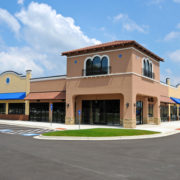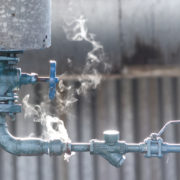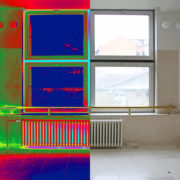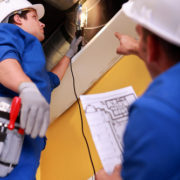A Quick Guide to Building Envelopes
A building envelope is literally the part of a building you can draw lines around. The components include the walls, roof and foundation. These are obviously the most important components of any structure, but they are also the most overlooked. Many people take the building envelope for granted and don’t give it the proper attention and care it needs to keep people safe and comfortable inside. Since the parts of a building envelope take the most abuse from weather and other natural elements, infrared inspection services are often called to conduct an inspection. Here is a quick background on building envelopes.
Different Components, Same Goals
While there are three different components to a building envelope, they all have the same goals. Those goals include keeping cool or warm air inside, preventing water penetration, stopping air from entering in from the outside and drying out after rain to prevent mold and rotting. When any of these three components are compromised for any reason, thermal imaging services can be used to determine the severity of the damage. Sometimes property owners may not even realize the damage to the building envelope, so thermal imaging services can also be used to prevent disasters from occurring.
Challenges With Protecting Building Envelopes
You can’t completely protect a building envelope. Weather and natural disasters occur all the time, so the main thing you can do to protect a building envelope is to maintain it as much as possible, including preventative maintenance. Even if the building is in a climate where harsh weather doesn’t occur often, it is still exposed to sun, wind and rain at the very least. All of these elements could combine to wear on a building envelope over time, and thermographic scanning can help detect those areas that are worn down.
How Infrared Technology Benefits Building Envelopes
Due to the importance and function of a building envelope, it’s critical to conduct regular thermographic scanning through professional infrared inspection services. Some issues with the building envelope can’t be seen with the naked eye, but infrared technology can detect potentially serious issues before they become a big factor. Building owners may not be aware that moisture is present in the roof or in the walls. There may even be a slight air leak in those areas as well. Being aware of these issues before they become a large problem will help keep building envelopes healthy and stable for the long-term.
Infrared Consulting Services has over 30 years of experience dealing with and preventing issues related to building envelopes. Our experienced and certified thermographers will be able to identify issues before they become a big headache for your company. For more information on the importance of maintaining a building envelope, or to book your thermographic scanning appointment, be sure to contact us.








 By detecting problems before they occur and by pin-pointing exactly where problems might exist, Infrared Thermographic Testing has many benefits.
By detecting problems before they occur and by pin-pointing exactly where problems might exist, Infrared Thermographic Testing has many benefits.
 Learn more about our wide range of non-invasive, non-destructive inspection & testing services and if they are right for your needs.
Learn more about our wide range of non-invasive, non-destructive inspection & testing services and if they are right for your needs.
 Founded in 1988, Infrared Consulting Services (ICS) provides professional infrared electrical, NDT and building envelope inspection services nationwide.
Founded in 1988, Infrared Consulting Services (ICS) provides professional infrared electrical, NDT and building envelope inspection services nationwide.